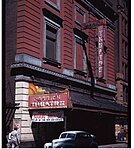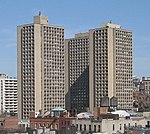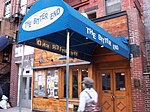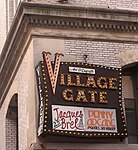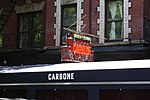Bleecker Street Cinema
1960 establishments in New York City1990 disestablishments in New York (state)1991 disestablishments in New York (state)Cinemas and movie theaters in ManhattanCultural history of New York City ... and 5 more
Entertainment companies disestablished in 1991Entertainment companies established in 1960Former theatres in ManhattanGreenwich VillageRepertory cinemas

The Bleecker Street Cinema was an art house movie theater located at 144 Bleecker Street in Manhattan, New York City, New York. It became a landmark of Greenwich Village and an influential venue for filmmakers and cinephiles through its screenings of foreign and independent films. It closed in 1990, reopened as a gay adult theater for a short time afterward, then again briefly showed art films until closing for good in 1991.
Excerpt from the Wikipedia article Bleecker Street Cinema (License: CC BY-SA 3.0, Authors, Images).Bleecker Street Cinema
Bleecker Street, New York Manhattan
Geographical coordinates (GPS) Address Nearby Places Show on map
Geographical coordinates (GPS)
| Latitude | Longitude |
|---|---|
| N 40.72799 ° | E -73.99943 ° |
Address
New University Pen And Stationery
Bleecker Street
10012 New York, Manhattan
New York, United States
Open on Google Maps

